Pride, prosperity, pathways to the future. Lorain County is pulling out all the stops when it comes to commemorating the county’s bicentennial and celebrating achievements and accomplishments to come.
“This year will be one of pomp and circumstance,” says Elyria city councilman Andrew Lipian, who, as chairman of the Lorain County Bicentennial Committee, is spearheading the creation of special events and programming to honor the county’s 200th birthday.
“The committee is dedicated to educating the public about the proud history of our county and what our forebearers had to endure to carve prosperity out from the area,” he says.
No observance would be complete, adds Tony Gallo, president and CEO of the Lorain County Chamber of Commerce, without recognizing the businesses and institutions past and present that form the bedrock of the county’s stellar national and international stature.
“They’re all iconic names that have played a tremendous role in making Lorain County what it is today,” Gallo says.
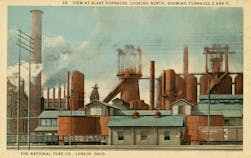
1. United States Steel Corporation
Founded by business icons Andrew Carnegie, J.P. Morgan and Charles Schwab in 1901, United States (U.S.) Steel Corporation is renowned for supplying the materials for well-known structures that have weathered good times and bad — from skyscrapers to the battleships that helped win World War II. Emigrants from around the world made the decision to immigrate to Northeast Ohio for employment at the Lorain plant.
“My grandfather came from Italy in 1903 to work at U.S. Steel,” Gallo reflects, “and in the 1950s, the demand for good workers was so high that the company recruited workers from Puerto Rico and Mexico. Lorain is known as The International City because so many immigrants settled here to work at the plant.”
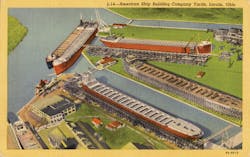
2. The American Shipbuilding Company
In the early 1800s, Lorain’s dry docks were considered to be the largest on the Great Lakes, thanks to the American Shipbuilding Company, which had relocated from Cleveland to the east bank of the Black River. Superior City was the first steel ship launched from Lorain in April 1898, and through the years that followed, the docks built 909 ships, ranging from passenger vessels and tankers to tugs and ferries. During World War II, the company contributed to the Navy’s fleet with mine sweepers, oar boats and cruisers, including U.S.S. Lorain and the U.S.S. Lorain County. Beginning in the 1960s until the company closed in 1981, the docks were known for building “super ships” — including the M/V Paul R. Tregurtha, which, at an astonishing 1,013 feet in length, remains the longest freighter in operation.
“The company was a staple,” Lipian says. “It’s what made the harbor in Lorain a focal point for the production of merchant and military vessels that helped America transfer its commerce beyond our shores. That success might secure the port as the site for a submarine base, which is the subject of much conversation.”
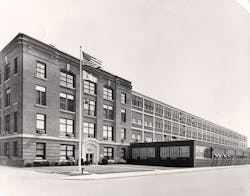
3. RIDGID Tool Company
What started with a straight pipe wrench in 1923 has expanded into an Elyria company known for crafting more than 300 tools used around the world, ranging from wet-dry vacs to anvils and vises under the RIDGID brand.
As Ridgid commemorates its 100th anniversary, Gallo reflects on the myriad ways the company supports the county where its success began.
“They’ve given back to the community so many times,” he says. “When the Elyria City School District was preparing to construct new buildings, Ridgid provided all the tools workers used to build them. Through the years, the company has also donated clean rooms and classrooms throughout the county.”
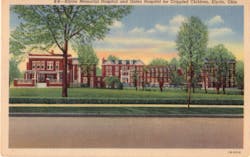
4. Elyria Memorial Hospital (the birthplace of Easterseals)
In 1907, Elyria resident Edgar Allen was a happily married father of two. Little did he know that personal tragedy would earn him the nickname “Daddy” from countless children battling disabilities; and that grief would lead to the birth of Easterseals, a nonprofit dedicated to enhancing access to health care, education and employment for the more than 1.5 million Americans each year living with them.
When his teenage son Homer was killed in an auto accident, Allen — who’d made his fortune by supplying telephone poles to AT&T — was haunted by the thought that if Elyria had more than a makeshift hospital, his son would have survived. He devoted his time to raising the funds to build a hospital. His goal was realized when Elyria Memorial Hospital (EMH) opened a year later in 1908.
While volunteering at EMH, Allen met an 8-year-old orphan who was receiving treatment to help straighten his legs. The pair bonded, and the child began calling him “Daddy.” Quickly realizing the acute need for a facility designed to help disabled children, Allen successfully raised funds for the Gates Hospital for Crippled Children, which opened in 1915 at EMH. It was the first facility of its kind in the country.
From there, Allen and Rotary International founder Paul Harris formed the National Society for Crippled Children in 1919 — the forerunner to the International Society for Crippled Children. To raise money for the organization, the duo launched a campaign in the spring of 1934, asking donors to purchase postage-stamp-sized stickers and place them on mail to show their support for the cause. The grassroots efforts blossomed into a national movement that became known in 1967 as Easter “seals” after the time of year they were introduced to the public.
For Gallo, Allen’s soft-heartedness is personal.
“‘Daddy’ Allen’s story has touched me in so many ways,” Gallo reflects. “I have a cousin who was diagnosed with polio and spent time at Gates Hospital. Thanks to the medical care she received there, she’s able to walk with the aid of a brace. My cousin graduated from Kent State University and was an educator in the Elyria school system for 35 years. I was born at Elyria Memorial Hospital and, as a Rotarian, am proud of the organization’s association with Easterseals — and the fact that the first seals were printed at Wilmot Printing, where I once worked.”
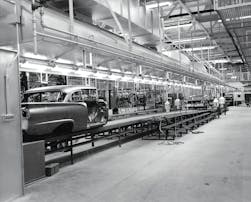
5. Ford Motor Company
In its 48 years of operation — from 1958 through 2005 — Ford’s Lorain assembly plant turned out 15,805,106 vehicles, including Econoline vans and their E-Series derivatives, Thunderbirds, Mercury Cougars, Fairlanes and first-generation Falcons.
Considered by the United Auto Workers to be “the most modern assembly plant in the automotive industry,” at the time, it boasted the largest painting operation in the industry and earned numerous awards for worker safety, product quality and community involvement.
Ford’s connection to Lorain County remains robust. The 3,700,000-square-foot Ohio Assembly Plant, located on 419 acres in Avon Lake, Sheffield Lake and Sheffield Village, currently produces the Ford E-Series, Ford Super Duty and Ford F-650/F-750.
“Its location makes Lorain County probably one of the very few manufacturing areas that has one plant that sits in three different municipalities,” Gallo says. “Ford obviously thinks very highly of it. Officials recently announced a $1.5 billion expansion to build electrical vehicles there — which will create 1,800 new union jobs and double the workforce.”
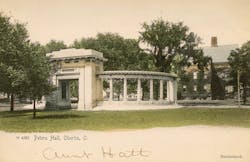
6. Oberlin College & Conservatory
Mention “Oberlin College” in a crowd, and it’s a fair bet that someone in attendance will have graduated from there or know someone who has.
The college’s acclaimed reputation is well-earned. Founded in 1833 by the Rev. John J. Shipherd, a Presbyterian minister, and missionary Philo P. Stewart to “train teachers and other Christian leaders for the boundless most desolate fields in the West,” the institution became an advocate for progressive causes and a bastion of social justice. Co-educational at its founding, the college regularly admitted Black students. In 1844, George B. Vashon became the first Black student to earn a bachelor’s degree from the college, followed by Mary Jane Patterson who, in 1862, earned a B.A. in education, becoming the first Black woman to graduate from an American college.
“With the acceptance of African American and female students, Oberlin became a trendsetter,” says Lipian, a proud alum who earned his B.A. in philosophy in 2012. “The college also boasts one of the top 10 conservatories for music in the world. When you attend Oberlin College, you understand why it draws the lion’s share of international students. I’m honored that we have it in our community.”
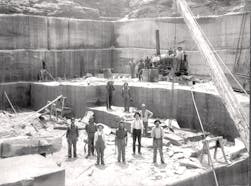
7. Buckeye Quarry
It’s easy to see why Lorain County is considered to be the home of the “Sandstone Center of the World.” Both Amherst and South Amherst boast an impressive number of sandstone quarries initially used by settlers in the 1800s to construct gristmills and sawmills. Over the century that followed, several dozen quarry companies developed on the various quarries located there, and railroads traveled through the towns to transport the sandy rock throughout the country. At more than 200 feet deep, Buckeye Quarry is thought to have been one of the largest quarries in the world.
“Although the quarries don’t exist anymore, they were there for a reason,” Gallo says. “They allowed economic development to happen in the community.”
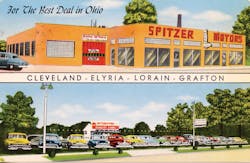
8. Spitzer Autoworld
In 1904, a Michigan industrialist was traveling through Lorain County in the hopes of finding a businessman who’d be interested in selling his new invention. Locals referred him to Grafton hardware store owner George Spitzer. The rest, as the saying goes, is history: Henry Ford’s Model T put Americans on the move, and more than a century later, four generations of Spitzers continue to make sure drivers ride in style in the wheels of their choice.
“A chance meeting at a hardware store in Grafton is where the Spitzer dynasty began,” Gallo reflects. “The family is still successfully running the business — and the hardware store still exists.”
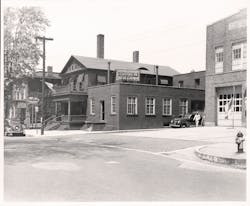
9. The Chronicle-Telegram
For more than a century, four generations of the Hudnutt family have preserved a legacy built on providing the accurate, unbiased news coverage The Chronicle-Telegram is known for.
“As our industry consolidates and papers get bought up by conglomerates, they’re managed from a distance,” says Bill Hudnutt, president of Lorain County Printing and Publishing, owners and operators of The Chronicle-Telegram, Amherst News-Times, Oberlin News-Tribune and Wellington Enterprise, along with the Medina Gazette and radio stations including WEOL 930-AM. “As a result, they don’t know the pulse of the community their readers live in because they’re not located there. Since I live here, if someone doesn’t like what we write, they can come knock on my door.”
The newspaper’s history dates back to 1919, when the city’s two newspapers, The Chronicle and The Telegram, merged to form The Chronicle-Telegram. Three years later, Bill Hudnutt’s great-grandfather, Lorain County resident A.C. Hudnutt, became a partner in The Chronicle-Telegram, and the sole owner in 1927. Following A.C.’s death in 1950, his children, Arthur D. Hudnutt and Molly Young, took the helm.
Through the decades, six additional family members have ensured the sense of fairness, honesty and purpose remains resolute.
“The standards we set allow me to sleep at night because I know our journalists take their jobs very seriously,” Hudnutt says. “They’re not malicious, and I don’t have to worry about a rogue editor or reporter who’s loosey-goosey with the facts. There’s a reason people subscribe to us, and The Chronicle-Telegram is regularly voted best newspaper in the state.”
Its existence is one Lipian doesn’t take for granted.
“The Chronicle-Telegram is the public forum where Lorain County ideas and policies are debated and reviewed for the reading public and the opinionated among us,” he says. “It’s the arena where we determine our priorities and the direction of our county and cities, and has stood as a breakwall against the storms of change. One of the soothingly predictable and steady aspects of Lorain County life is that you can still open the C-T and find out what’s going on in your local community.”
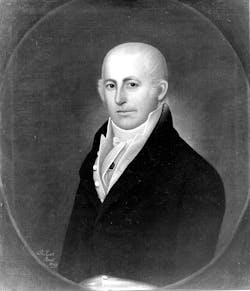
10. Lorain Iron Company
When Heman Ely, the explorer for whom the city of Elyria is named, set foot upon a parcel of 12,500 acres of wild countryside in 1817, he knew the possibilities were endless. Ely built a log house, a dam, a gristmill, a sawmill and houses to accommodate settlers migrating to the area and began building an industrial empire, which included construction of the Lorain Iron Company on the road aptly known today as Furnace Street. The firm specialized in casting kitchenware and appliances with the iron it produced, including stoves, stove parts, kettles, baking pans, skillets, cauldrons and pots.
In its heyday, the company employed 100 men in jobs involving the smelting process and tasks that included chopping wood to keep the furnace fire lit. Employees were compensated in wages that amounted to around $1 a day.
“The Lorain Iron Company is considered to be the first factory in Elyria,” Gallo says. “Ely’s endeavors allowed other industries and the city of Elyria to bloom. He was also instrumental in making sure Elyria would be the county seat.”







